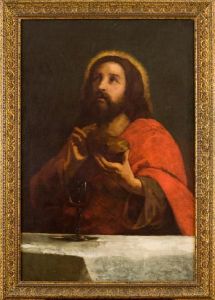Giuseppe Alberti Paintings
Giuseppe Alberti was an Italian Baroque painter and sculptor who was born in 1640 in San Martino al Cimino, Viterbo, a small town in central Italy. He hailed from an artistic family, being the son of the sculptor Alessandro Alberti. His brother, Cherubino Alberti, was also a prominent sculptor and painter. Giuseppe's work is characterized by the dynamic composition, dramatic use of light and shadow, and a focus on religious and mythological subjects that are typical of the Baroque period.
Alberti received his early training from his father and later moved to Rome, where he was influenced by the works of prominent artists of the time such as Gian Lorenzo Bernini and Pietro da Cortona. In Rome, Alberti honed his skills and developed his distinct style, which combined the high drama and emotion of Baroque art with a keen observation of natural detail.
Throughout his career, Giuseppe Alberti worked on various commissions, both as a painter and a sculptor. He is particularly known for his frescoes and altarpieces in churches across Italy. One of his notable works includes the fresco in the apse of San Giovanni in Oleo in Rome. Alberti's paintings often featured vibrant colors, dynamic figures, and a strong narrative element.
Despite his talent and contributions to Baroque art, Giuseppe Alberti did not gain the same level of fame as some of his contemporaries. Nevertheless, his work has been appreciated for its emotional intensity and technical skill. Alberti continued to work and receive commissions until his death in 1716. Today, his works can be found in various churches and collections in Italy and are studied for their contribution to the development of late Baroque artistic expression.
